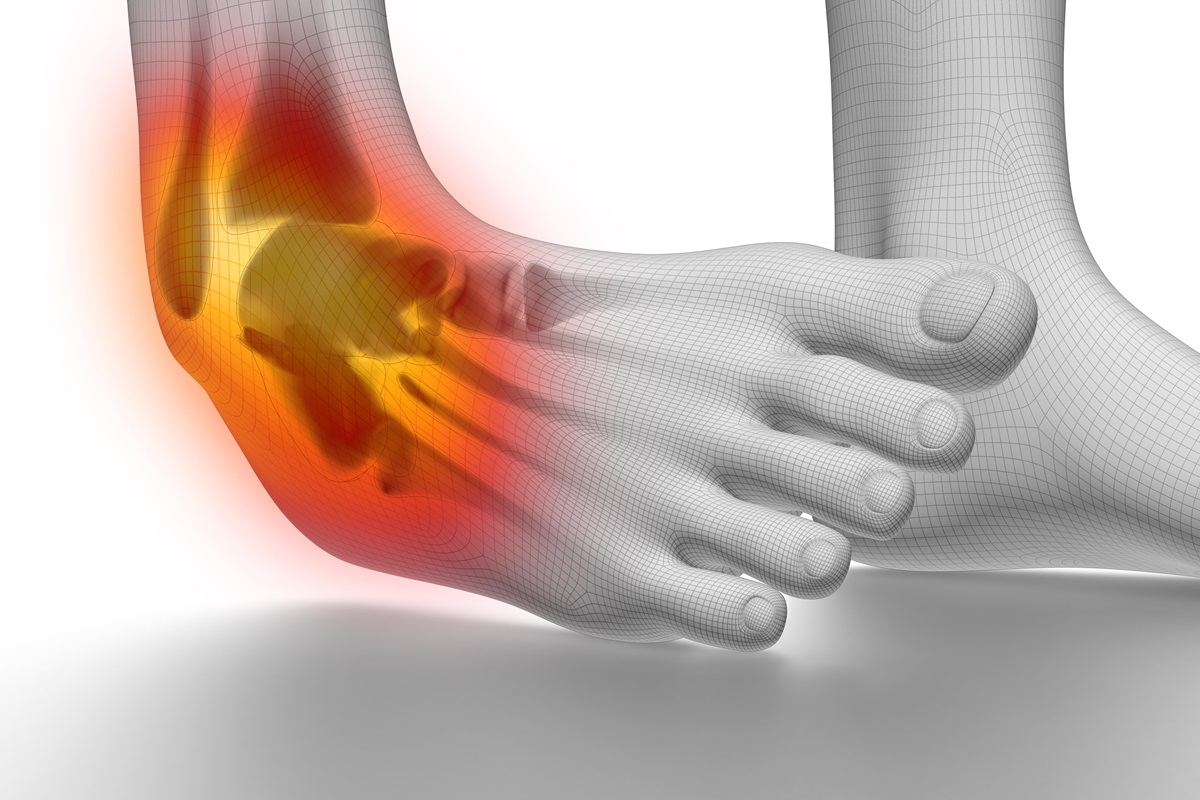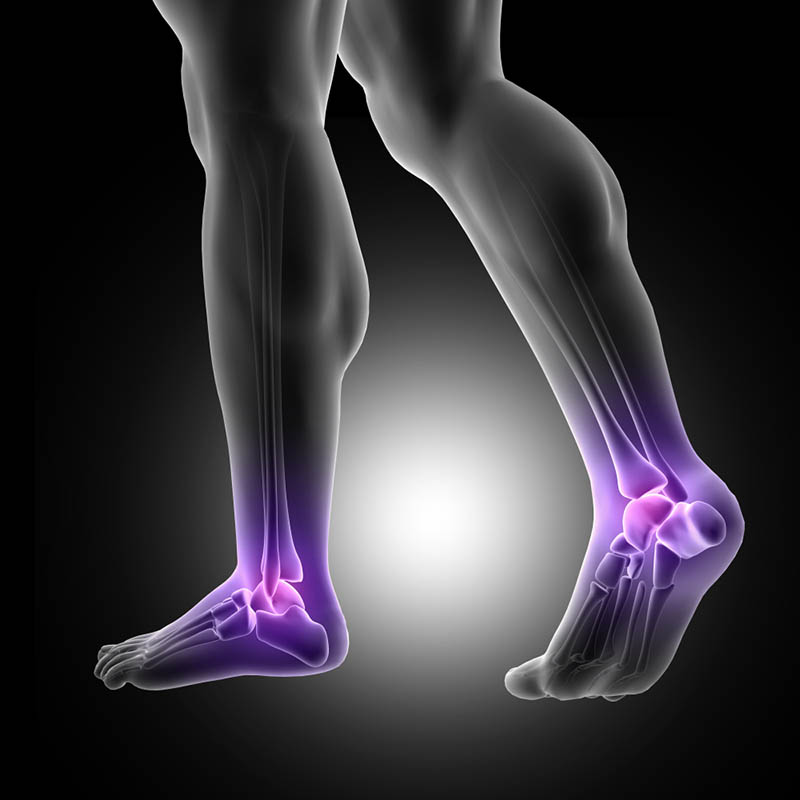A sprained ankle is one of the most common musculoskeletal injuries, affecting people of all ages and activity levels. Whether you twisted your ankle during sports or while stepping on an uneven surface, understanding the types of ankle sprains is essential for proper treatment and prevention of long-term damage. Since different types of ankle sprains …
A sprained ankle is one of the most common musculoskeletal injuries, affecting people of all ages and activity levels. Whether you twisted your ankle during sports or while stepping on an uneven surface, understanding the types of ankle sprains is essential for proper treatment and prevention of long-term damage. Since different types of ankle sprains can vary in severity, from minor stretches to complete ligament tears, early evaluation and care from specialists—such as those at Wisconsin Foot & Ankle Clinic—can significantly improve your recovery.
It’s estimated that roughly 25,000 individuals suffer from a sprained ankle every day, making it one of the most frequently occurring injuries globally. This high volume highlights the need for awareness, prevention, and timely intervention. Whether mild or severe, all types of ankle sprains deserve careful evaluation and appropriate management.
What Is a Sprained Ankle?
Sprained ankles occur frequently, especially during sports, high-impact activity, or even daily movements on uneven surfaces. The types of ankle sprains depend on the force and direction of the injury, as well as the specific ligaments involved. Understanding the mechanics and classification of ankle sprains can guide effective treatment and help prevent recurrent sprains.
Understanding Ankle Ligament Injuries
An ankle sprain occurs when one or more ligaments—tough bands of tissue that connect bones—are stretched or torn. Most commonly, sprains affect the lateral ligaments on the outside of the ankle due to inward rolling, also called inversion injuries. Causes include sports activities, falls, missteps, or wearing improper footwear.
Types of Ankle Sprains
Understanding the types of ankle sprains helps tailor the treatment and predict recovery outcomes. Each type presents differently depending on which ligaments are injured and how badly.
Anatomical Classifications
Ankle sprains can be categorized based on anatomic classification, identifying which ligaments have been affected. These include the anterior talofibular ligament (ATFL), calcaneofibular ligament (CFL), and deltoid ligament, among others. This form of classification also highlights lateral ankle sprain, eversion ankle sprain, medial ankle sprain, and syndesmotic ankle sprain, commonly referred to as high ankle sprains.
- Inversion Sprain: Typically affects the ATFL and sometimes the CFL, caused by a plantarflexion/inversion movement of the foot.
- Eversion Sprain: Involves the deltoid ligaments and occurs when the foot rolls outward.
- High Ankle Sprain (Syndesmotic Injury): A more severe injury involving ligaments between the tibia and fibula, often caused by forced external rotation or twisting while bearing weight.
These ankle sprains types vary in complexity and recovery time, making accurate diagnosis essential.- Inversion Sprain: The most common type where the foot rolls inward, stretching the outer ligaments.
- Eversion Sprain: Less common, occurs when the foot rolls outward, stressing the inner ligaments.
- High Ankle Sprain (Syndesmotic Injury): Affects the ligaments connecting the tibia and fibula above the ankle joint. High ankle sprains are typically more severe and may require longer recovery time.
Functional Classifications
Beyond anatomical differences, functional classification assesses the severity and mechanical instability of the sprain. The functional grading system helps clinicians decide on treatment plans and timelines for recovery. Grades range from mild stretching to complete tear of the ligament.
- Grade I (Mild): Includes microscopic tearing of collagen fibers, minimal swelling, and slight tenderness. Often managed with conservative care like ankle taping, ankle bracing, and rehabilitation exercises.
- Grade II (Moderate): Indicates partial tearing of the ligament, more noticeable swelling and bruising, and difficulty walking.
- Grade III (Severe): A complete tear of the ligament with intense instability, limited range of motion, and significant tenderness. Often accompanied by chronic ankle instability if not properly managed.
Each grade requires a tailored approach to treatment and rehabilitation, ideally guided by Expert podiatric services in Wisconsin.
Sprains represent approximately 75% of all ankle-related injuries, and alarmingly, more than 40% of these can progress to long-term or chronic complications. This includes persistent pain, chronic ankle instability, and ongoing functional instability. Comprehensive care, including early diagnosis and effective rehabilitation, plays a critical role in reducing these risks.
- Grade I (Mild): Slight stretching with microscopic tears in the ligament. Mild tenderness and swelling.
- Grade II (Moderate): Partial tearing of the ligament with moderate swelling, bruising, and some instability.
- Grade III (Severe): Complete rupture of the ligament, resulting in significant swelling, pain, and difficulty bearing weight.
Ankle Sprain vs. Fracture

While fractures require different interventions than sprains, both can cause significant pain, swelling, and difficulty walking. Differentiating between these injuries early is essential, especially since high ankle sprains can mimic fracture symptoms. A prompt evaluation using diagnostic tools such as MRI or X-ray ensures the right path forward for recovery.
Key Differences in Symptoms and Severity
While both injuries cause pain and swelling, fractures typically involve more severe, localized pain, and may show visible deformity or an inability to move the ankle at all. Unlike fractures, types of ankle sprains may still allow limited motion, though weight-bearing is often painful. Diagnostic imaging is crucial to confirm the difference.
Symptoms of an Ankle Sprain
Ankle sprains typically present with noticeable bruising, tenderness, and a reduced ability to move the joint comfortably. The severity of symptoms often reflects the grade of the injury—from Grade 1 sprain to Grade 3 sprain. In more advanced cases, symptoms may include mechanical instability or limited range of motion due to ligament damage.
Common Signs to Watch For
Typical symptoms include pain, swelling, bruising, and tenderness around the ankle joint. You might experience instability or a feeling of “giving way” during movement. Difficulty bearing weight is another hallmark symptom, especially in higher-grade sprains.
Causes of Ankle Sprains
Many types of ankle sprains occur during rapid changes in direction, poor landings, or slips on uneven surfaces. Wearing improper footwear or lacking sufficient muscle balance can increase your vulnerability. Additionally, activities involving plantar flexion or forced external rotation put stress on the lateral ligaments, contributing to both acute and recurrent sprains.
Everyday Activities That Can Lead to Injury
Common causes include walking or running on uneven terrain, misstepping off a curb, sports that involve jumping or quick pivots, or wearing shoes that lack ankle support. Even minor falls can lead to severe types of ankle sprains in some individuals. Prevention begins with understanding your personal risk factors and avoiding hazardous conditions when possible.
Diagnosis and Evaluation
Clinical assessment includes testing for joint laxity, proprioceptive deficits, and functional range of motion. Tools such as the Ottawa Ankle Rules, anterior drawer test, and external rotation stress test assist in ruling out fractures or identifying syndesmotic ankle sprains. At Wisconsin Foot & Ankle Clinic, we combine imaging like ultrasound and MRI scans with detailed physical examination findings for accurate diagnoses.
How Ankle Sprains Are Diagnosed
Accurate diagnosis begins with physical examination findings focused on swelling, pain location, and joint laxity. Clinicians use a combination of special tests, including the anterior drawer test, talar tilt test, squeeze test, and external rotation stress test (Kleiger’s test). Imaging such as x-ray, ultrasound, or MRI (magnetic resonance imaging) scan may be used to rule out fractures and assess soft tissue injury.
Functional evaluations like the Foot and Ankle Disability Index (FADI) and the Star Excursion Balance Test (SEBT) can help determine recovery progress. In select cases, arthroscopy or stress radiography may be necessary to confirm syndesmotic ankle sprain or hidden ligament tears. At Wisconsin Foot & Ankle Clinic, we use comprehensive assessment tools to deliver precise diagnoses.### When to Seek Medical Attention If you’re unable to bear weight, notice persistent swelling, or see any deformity, it’s time to see a provider. Early diagnosis can help determine the type of ankle sprain and prevent complications. At Wisconsin Foot & Ankle Clinic, we offer prompt evaluations and expert guidance for all ankle sprains types.
Treatment Options for Ankle Sprains
Effective care for different types of ankle sprains includes both short-term symptom relief and long-term functional recovery. Advanced cases may require immobilization, use of air splints, or ankle bracing to reduce motion and protect healing tissues. Tailored rehabilitation strategies, like proprioception training and flexibility exercises, reduce the risk of chronic ankle instability.
Initial Care and the RICE Protocol
Early treatment follows established guidelines such as the PRICE protocol (Protection, Rest, Ice, Compression, Elevation), POLICE principle (Protection, Optimal Loading, Ice, Compression, Elevation), or the PEACE and LOVE approach. Each emphasizes reducing swelling, easing pain, and preventing further damage while preserving mobility.
- Rest: Minimize weightbearing and avoid painful movements.
- Ice: Apply intermittently to control swelling and bruising.
- Compression Dressings: Use air splints or ankle taping to provide external support.
- Elevation: Keep the foot above heart level to decrease fluid accumulation.
These steps are crucial for managing all types of ankle sprains, from Grade 1 sprain to complex high ankle sprains.### Medications and Pain Relief Over-the-counter pain relievers like ibuprofen can help reduce inflammation. For more severe cases, prescription medications may be needed. Anti-inflammatory treatment is an important part of managing all types of ankle sprains.
Physical Therapy and Rehab
Rehabilitation is a vital step in preventing recurrent sprains and restoring full gait pattern. Programs include balance training, proprioception training, muscle balance exercises, and flexibility exercises tailored to restore stability and prevent proprioceptive deficits. Training on both the dominant leg and non-dominant leg ensures symmetrical recovery.
Emphasis is placed on re-establishing neuromuscular control and improving peroneus brevis electromyographic response time. Patients may be advised to use ankle brace or castboots during recovery, depending on instability levels. At Wisconsin Foot & Ankle Clinic, rehab is personalized to ensure safe and full return to activity. When Surgery Is Considered, Surgery is rare but may be needed in cases of Grade III sprains or high ankle sprains that fail to heal properly. It may involve ligament repair or reconstruction. Ankle sprain treatment at Wisconsin Foot & Ankle Clinic includes both conservative and surgical options when necessary.
Can You Walk on a Sprained Ankle?
Attempting to walk too soon, especially on a Grade 2 sprain or high ankle sprain, can increase strain on healing ligaments like the ATFL or CFL. It’s best to avoid weightbearing activities until swelling and pain subside and you’ve been assessed by a provider. Guided rehabilitation improves outcomes and reduces the risk of delayed healing or worsened gait pattern.
What to Expect and When to Avoid It
While mild Grade I sprains may allow limited walking, Grade II or III sprains often require immobilization. Walking too soon may worsen the injury and prolong recovery. When in doubt, consult our team for a safe, progressive return to activity.
Do Ankle Sprains Heal on Their Own?
While minor sprains can recover with rest, untreated or mismanaged sprains often lead to functional instability or repeated injuries. Without a structured plan that includes rehabilitation exercises and balance training, even a Grade 1 sprain may progress to chronic ankle instability. Timely intervention is essential for full healing and safe return to activity.
Recovery Timeline and Risks of Not Treating
Mild sprains may heal within 1–2 weeks, while moderate to severe sprains can take 6 weeks or longer. Ignoring a sprain or returning to activity too quickly increases the risk of chronic instability or re-injury. Trust in Expert podiatric services in Wisconsin to ensure a full recovery.
Preventing Future Ankle Sprains

Preventing sprains requires a proactive approach that strengthens the ankle and restores proprioception. Activities such as balance training, proper ankle taping, and improving peroneus brevis electromyographic response time reduce the chance of recurrent sprains. Wearing proper footwear and bracing during high-risk movements can support long-term joint stability.
Tips for Safer Movement and Support
To prevent recurrence, focus on improving balance, strengthening ankle muscles, and wearing supportive footwear. Bracing during high-risk activities and warming up before exercise can help protect the ankle. Awareness of the different types of ankle sprains helps you make informed decisions about movement and protection.
How Wisconsin Foot & Ankle Clinic Can Help
Our clinic specializes in managing all types of ankle sprains, from simple inversion injuries to complex syndesmotic ankle sprains. With access to Expert podiatric services in Wisconsin, patients benefit from personalized care that includes diagnostics, therapy, and post-recovery support. Trust Ankle sprain treatment at Wisconsin Foot & Ankle Clinic for advanced care and superior outcomes.
Expert Diagnosis and Personalized Care
Our team provides expert assessment and diagnosis for all types of ankle sprains. Whether you’re dealing with a mild sprain or a complex high ankle sprain, we tailor treatments based on your specific condition. Our patient-centered approach ensures optimal healing and prevention.
Comprehensive Rehab Services
We offer full-spectrum care, including physical therapy, mobility training, and custom recovery plans. At Wisconsin Foot & Ankle Clinic, our focus is not just on treating your sprain but helping you return to activity stronger than before. For trusted ankle sprain treatment in Wisconsin, our clinic is your best choice.
Conclusion
No matter the severity, all types of ankle sprains deserve attention and proper care. Early intervention, clear diagnosis, and a guided rehab plan can prevent long-term damage and get you back on your feet. For compassionate and expert care, rely on Wisconsin Foot & Ankle Clinic.
FAQs
Can I walk on a grade 2 ankle sprain?
Walking on a grade 2 ankle sprain can delay healing and worsen symptoms. It’s best to use crutches or a brace and follow medical advice for recovery.
What are the 4 types of sprains?
The four common types of ankle sprains include inversion, eversion, high ankle sprains, and chronic/recurrent sprains. Each type affects different ligaments and requires specific care.
How do I know what kind of sprained ankle I have?
A thorough evaluation including a physical exam and imaging can determine the type of ankle sprain you have. Visit Wisconsin Foot & Ankle Clinic for accurate diagnosis and personalized treatment.







